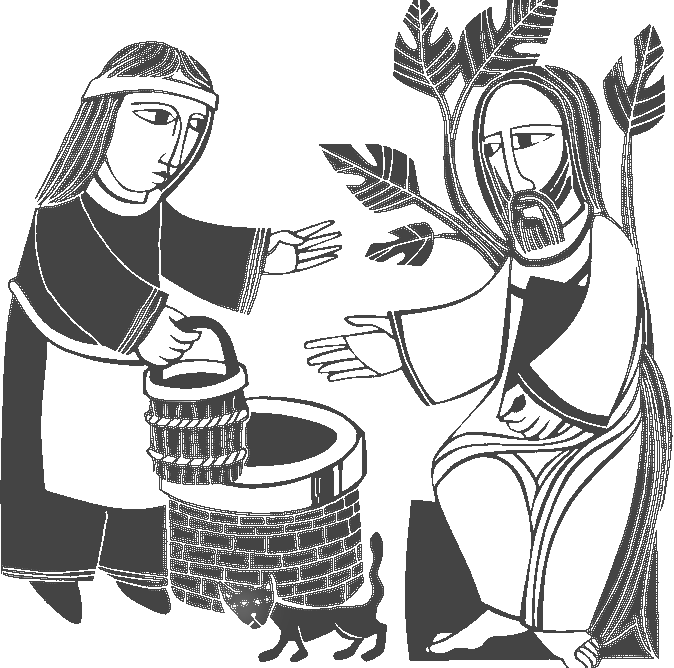Getting Ready to Pray
We pray in preparation for celebrating this liturgy of Lent by reflecting on how all living nature longs to escape emptiness. “Nature abhors a vacuum.” Everything that lives is a celebration of self-insufficiency. A drowning person struggles for air while a thirsty person wants water. Everything that is alive depends on something outside itself for continuing life.
Vegetation needs rain, but also sun.
We have great longings beyond the physical, many though those needs are. We are urged to reflect on these deeper longings in today’s readings. Lenten fasting and denials are meant to help us face our deeper longings. We do not like to admit it, but we long for God in every other hunger, thirst, or want.
We can pray with the soft disappointments of how nothing, no one, can complete us—and how we grumble at this important spiritual experience. We want God, but we do not want mystery. We want completion, but something that will last for more than a little while!
Some Thoughts
The Jews were freed from the bondage in Egypt to worship and serve the Lord. Their experience of this freedom was not also a freedom from experiencing their humanity. They had sung great hymns of joy at their victory over their masters in the crossing of the dry sea. It was easy to boast of their faith as they enjoyed their freedom. They were in a long process of learning about a deeper trust called faith. God was with them, but not according to their expectations. It wasn’t the Promised-Fullness just yet. They grumbled, of course, as we do still.
In the First Reading Moses knows that God’s people are thirsty in the desert and he becomes again their intercessor with God. God asks an act of faith on the part of Moses, who does respond by striking the “rock” with his staff. Presumably it is the same staff with which he struck the waters of the Sea of Exodus. As the waters then flowed back to give them their freedom, now the waters flow forth to give them life. They will grumble again for food, but for now they are satisfied, well, not totally or forever.
The Gospel is a long story containing all kinds of symbols. It takes place at “noon” which is full daylight, and for John very good things happen in the light. Water is the central symbol of this story. Jesus is thirsty and this is the setting of the story. He meets the woman, a Samarian with whom Jews usually keep their distance. He has no bucket and so the process of revelation begins.
John uses such elements to get Jesus into a position of presenting himself as the “Living Water.” The story is not about the woman’s having five husbands, but about Jesus’ being the Messiah. Actually the “five husbands” represent the foreign gods which the Samarians have taken into their cultic lives. Jesus presents himself as the place of true worship and relationship between God and humanity. As we will see also in next Sunday’s Gospel, John is presenting Jesus as a replacement for the Temple, which the Romans have destroyed in Jerusalem. Jesus replaces the Temple, but continues the relationship of God through the Covenants with Israel.
Jesus is the “living Water” which humanity needs and God desires to offer. Though natural water satisfies for a while, this water, which is Jesus, will bring peace and soul-satisfaction to those who drink. Our natural thirsts, hungers, drives and longings will remain of course, but a deeper grumbling will be calmed. This relationship will be and lead to “eternal life.”
Jesus offers himself as the “truth,” which is different from “truths.” He is offering a life grounded in faith, not certainty. The woman tells her kinsfolk that she met a man who could tell everything about her. He has the facts. This is attractive, but Jesus is offering more than facts, but rather, faith. The most important lines in the story come at the end as it usually does in John. The town’s folk say to the woman, “we no longer believe because of your words [alone]; for we have heard for ourselves, and we know that this is truly the savior of the world.”

